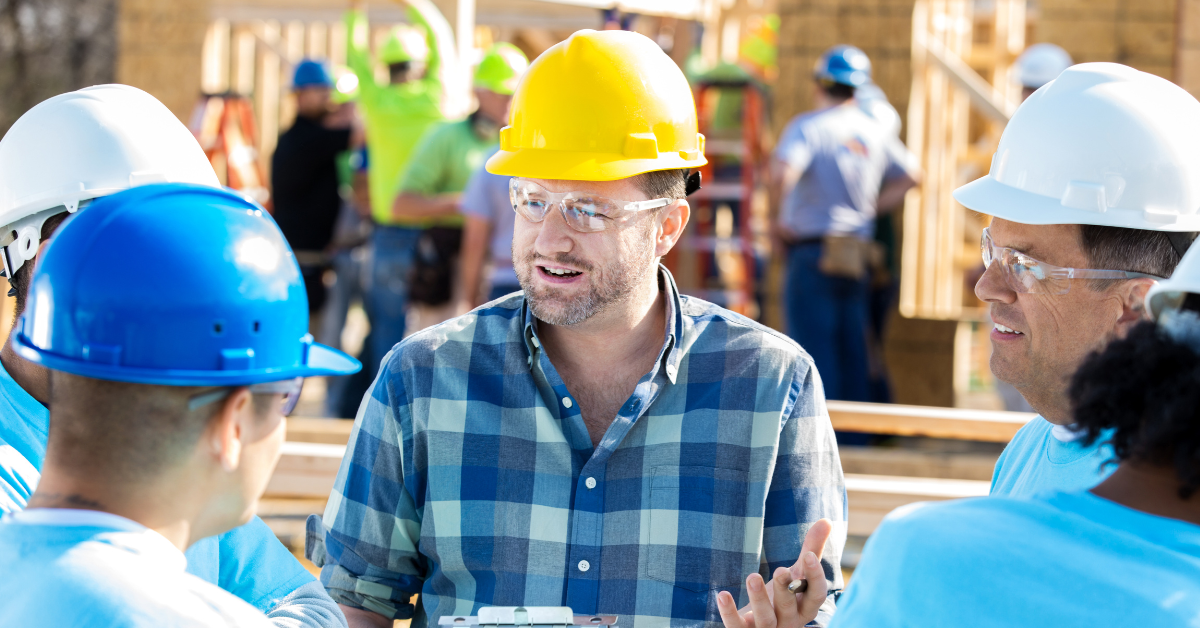Working in construction is a particularly physically taxing career path, and that’s only magnified in warmer months. Keeping your business and your workers safe during the heat is a priority on every site, but are you sure you’re doing everything you can to stay cool? We’ve got the tips for working construction in hot weather to ensure everyone is working safely all summer long.
Dress for the Weather
Oftentimes, wearing short sleeves isn’t enough to keep your body cool while working up a sweat. When choosing clothing, it’s important to know what keeps heat, like dark colors. Additionally, choosing fabrics that are breathable and wick moisture is key to avoiding unnecessary heat. Natural fibers like cotton, linen, and thin wool are great for this purpose. A plain white, 100% cotton tee is a reliable piece when it comes to dressing for work in the sun in the summer.
Eat a Light Lunch
When you work in a physically demanding field, you’re working up an appetite. While you should definitely keep yourself full, choosing to pack a lighter lunch can help keep your energy up. At the hottest part of the day, it’s best to avoid heavy, greasy foods that have the potential to upset your stomach. Opting for something that will still keep you full without weighing you down like a sandwich and snacks can help make sure you’re comfortable while working construction in hot weather.
Take Breaks
The pressure to work through discomfort can be daunting, but taking care of yourself is the best way to ensure you can do your best work for longer. This means taking plenty of breaks as the temperatures rise. Making sure not to overexert yourself and rest your body is imperative to avoiding heat-related illnesses.
Don’t Bounce Between Heat & Air Conditioning
If you have an air-conditioned place to rest on site, it can be tempting to take a minute indoors here and there. Unfortunately, that could be more dangerous than taking a break in a shaded area. The sudden temperature difference is shocking to our bodies, and continuously doing so can create more strain to properly function and regulate. Limiting the number of times you go into air conditioning can help you continue to properly adjust to warm weather.
Know the Symptoms of Heat-Related Illnesses
The best thing you can do to prepare to work construction in warm weather is to know the signs of heat-related illnesses. In a worst-case scenario, you can catch symptoms early and respond appropriately.
Heat Stroke: This is the most severe reaction to heat, and can be identified by an altered mental state like confusion or loss of consciousness, slurred speech, hot and dry skin, rapid heartbeat, and seizures. This is a medical emergency, and anyone experiencing a heat stroke should be taken immediately to the hospital.
Heat Exhaustion: You can recognize heat exhaustion by symptoms like excessive sweating, cold/clammy skin, weakness, an elevated/weak pulse, nausea, vomiting, and fainting. If not properly addressed, heat exhaustion can escalate to heat stroke.
Heat Syncope (Fainting): This occurs when the body experiences a sudden decrease in blood flow to the brain, such as when standing. Symptoms include light-headedness, dizziness, and fainting.
Heat Cramps: These often occur when exercising or exerting your body in high temperatures and are associated with decreased electrolytes from excessive sweating. An electrolyte packet or drink can help with the symptoms of heat cramps.
Heat Rash: This refers to a cluster of raised bumps caused by skin irritation and excessive sweating.
Knowing how to prepare to work long days in high temperatures is crucial to working construction in hot weather. Making smart choices when preparing for work, getting dressed, and packing your lunch can set you up to be more comfortable. Knowing what to look out for and when to rest will help you keep your energy up all day long.
MetzWood knows that safety is a key component of a great workplace. We can help make sure your construction site or office is free from hazards that can lead to compromised safety. Get in touch today to learn more!
Share this article!


